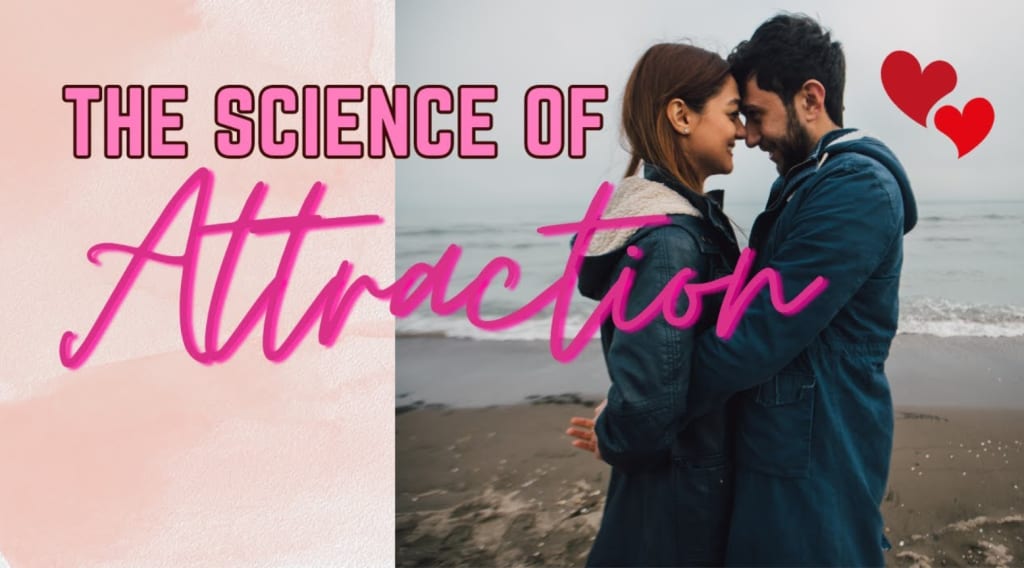The science of attraction
The Neurobiology and Psychology Behind Romantic Chemistry: Unraveling the Science of Attraction

Romantic feelings have long been depicted as whimsical, ineffable phenomena emanating from the depths of the heart—a narrative woven into the fabric of literature, music, and art. Yet, beneath this veneer of poetic mystique lies a realm governed by the intricate machinations of the brain—a realm where attraction unfolds through a symphony of neural calculations and sensory perceptions.
Contrary to popular belief, the genesis of attraction is not confined to the realm of sentimentality; rather, it emerges from a complex interplay of biological processes orchestrated by the brain. Within a matter of seconds, the brain conducts a sophisticated analysis, drawing upon input from all five senses to assess potential mates and determine compatibility.
The eyes, often heralded as the windows to the soul, serve as the initial arbiters of attraction. Across cultures and epochs, visual cues associated with youth, fertility, and vitality hold sway, signaling reproductive fitness to prospective partners. From the luster of long hair to the suppleness of unblemished skin, these visual cues ignite the spark of interest, prompting individuals to draw closer and engage their other senses in the dance of courtship.
But attraction transcends mere visual aesthetics; it permeates the very molecules that permeate the air. The nose, with its keen olfactory prowess, detects subtle chemical signals known as pheromones—biological messengers that convey vital information about an individual's genetic compatibility and reproductive health. In a mesmerizing dance of biology, pheromones elicit physiological responses in recipients, subtly influencing their perceptions and behaviors.
Recent studies have illuminated the profound impact of pheromones on human attraction, revealing how these elusive molecules can influence hormone levels and even alter perceptions of attractiveness. In one intriguing experiment, male volunteers exposed to the scent of ovulating women exhibited elevated testosterone levels, suggesting a subconscious physiological response to fertility cues encoded within pheromones.
Similarly, the auditory realm plays a pivotal role in the tapestry of attraction, with voice pitch and resonance serving as potent indicators of mate quality. Men are drawn to women with high-pitched, breathy voices—a vocal timbre associated with femininity and youth—while women exhibit a preference for men with deep, resonant voices suggestive of strength and virility.
Touch, too, emerges as a vital conduit for romantic connection, with tactile sensations shaping perceptions of warmth, affection, and intimacy. In a fascinating study, participants unwittingly exposed to temperature stimuli—holding either a hot or iced beverage—subsequently exhibited markedly different perceptions of interpersonal warmth and generosity, underscoring the profound influence of touch on social cognition.
Yet, amidst this sensory symphony, one moment stands out as the quintessential pinnacle of romantic initiation: the first kiss. A rich tapestry of tactile and chemical cues, the first kiss encapsulates the essence of attraction, weaving together the scents, tastes, and sensations that define intimate connection. It is a moment charged with anticipation, a gateway to a realm where hearts entwine and souls intertwine.
But beneath the surface of these visceral experiences lies a cascade of physiological responses orchestrated by the brain. As attraction takes hold, the brain releases neurotransmitters such as norepinephrine, triggering a surge of physiological arousal. Heart rates quicken, pupils dilate, and senses sharpen, as the body prepares for the possibility of love.
Far from being a purely cerebral affair, attraction permeates every fiber of our being, intertwining biology, psychology, and physiology in a symphony of desire. It is a dance of molecules and neurotransmitters, of sensory perceptions and instinctual impulses—a testament to the profound depths of human connection.
So, the next time you feel the flutter of attraction, remember that it is not merely a matter of chance or fate, but rather the culmination of a complex interplay of biological and cognitive processes. Embrace the science behind the spark, and marvel at the wondrous intricacies of the human experience."
About the Creator
ava
The future belongs to those who prepare for it today
Enjoyed the story? Support the Creator.
Subscribe for free to receive all their stories in your feed. You could also pledge your support or give them a one-off tip, letting them know you appreciate their work.






Comments (1)
Beautifully written. Check out my writings https://vocal.media/authors/danielle-mosley-rrf0n40ghs